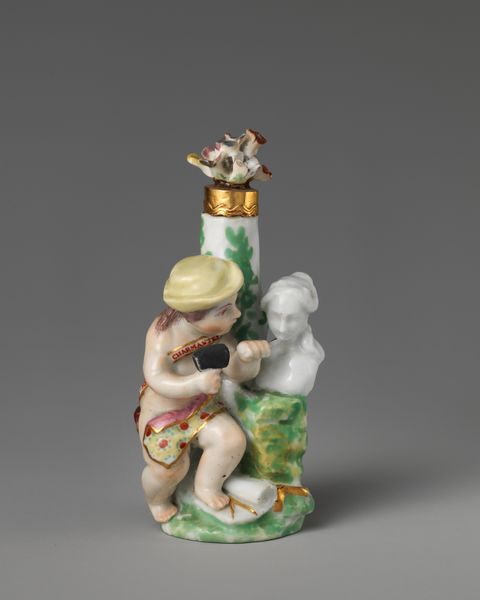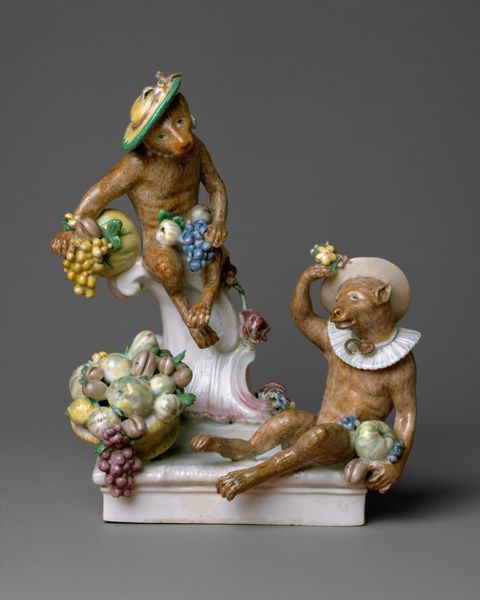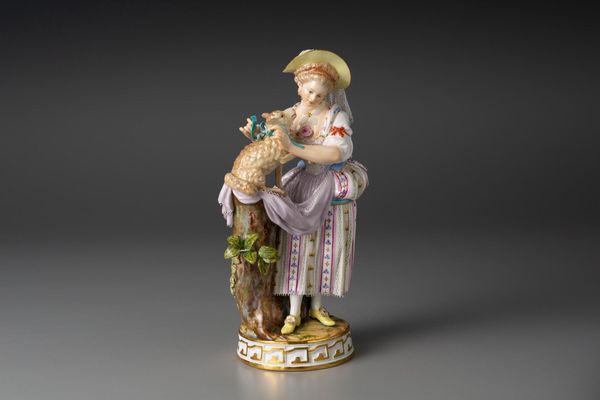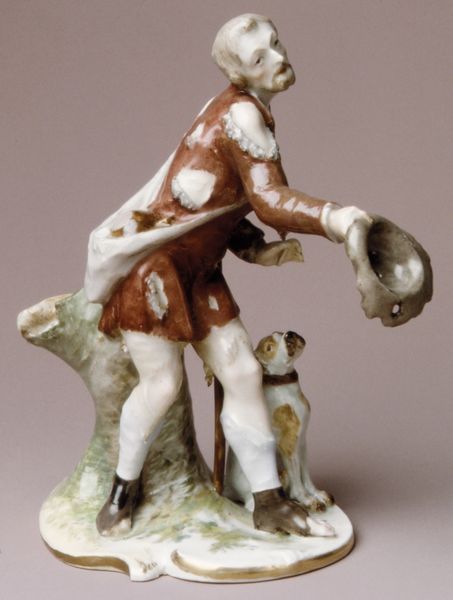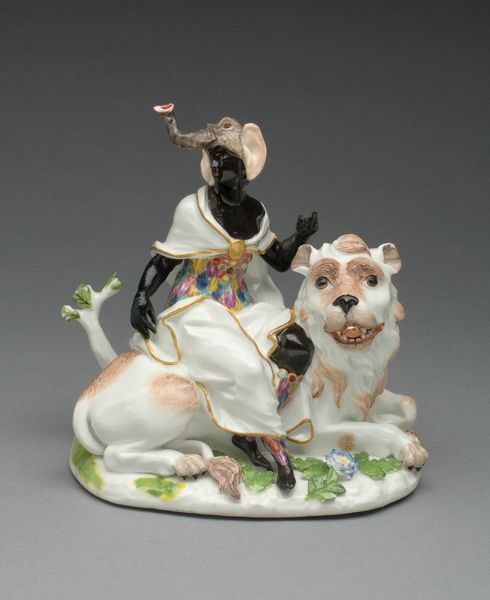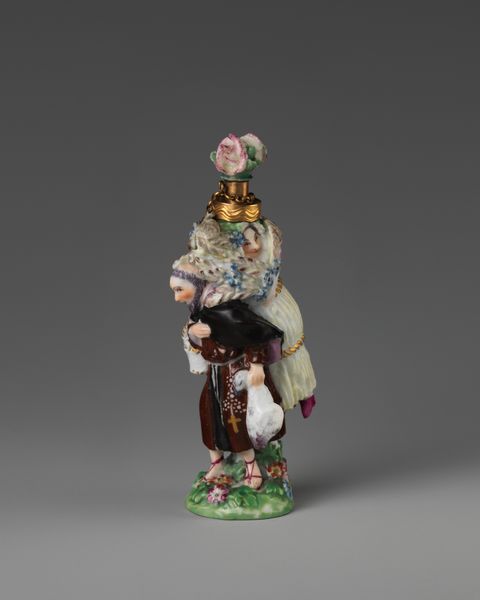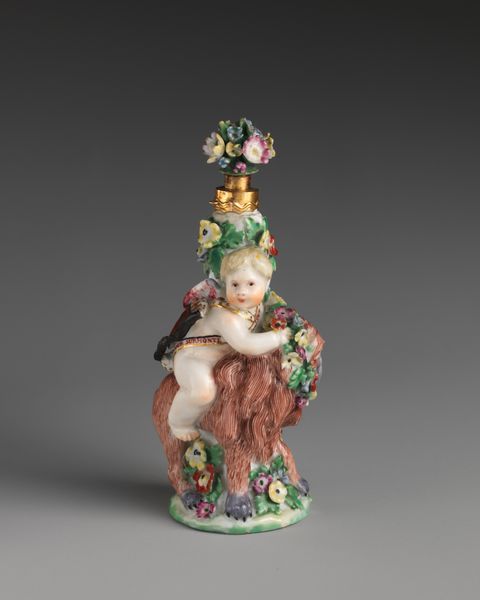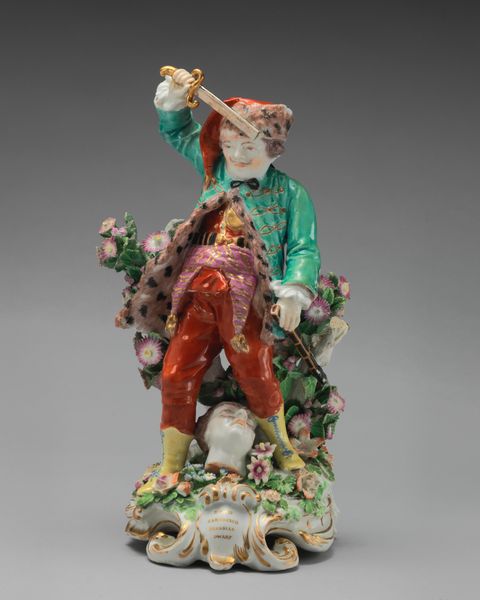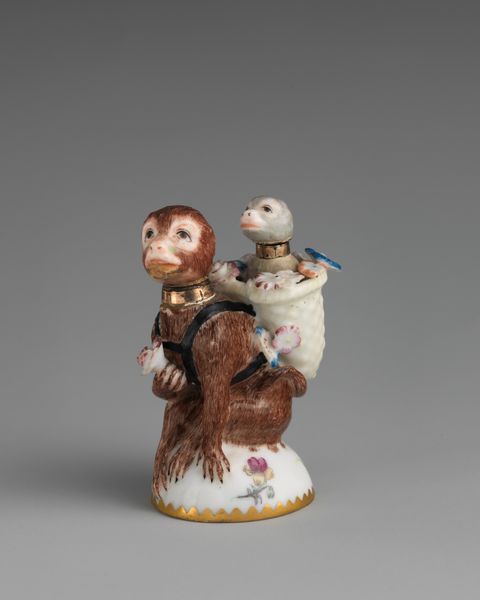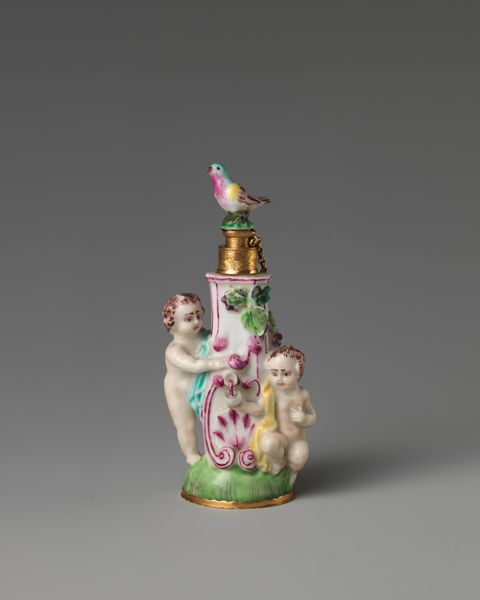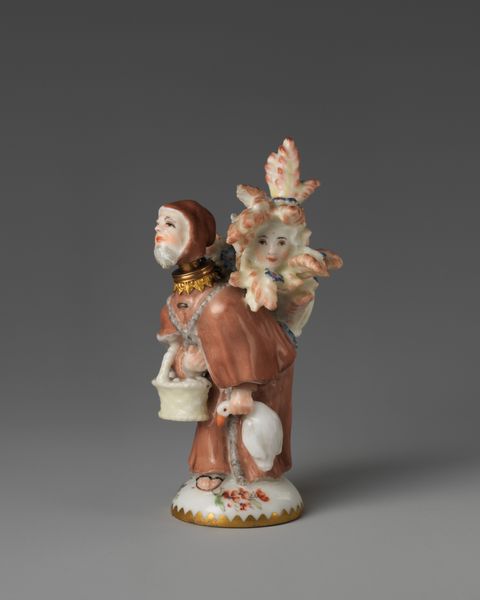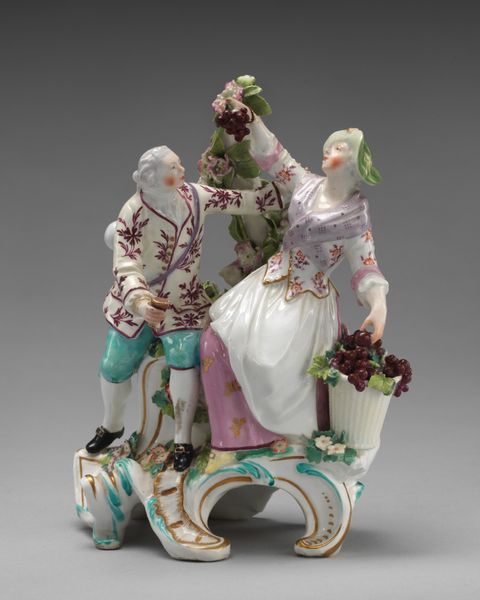
ceramic, porcelain, sculpture
#
portrait
#
ceramic
#
porcelain
#
figuration
#
sculpture
#
genre-painting
#
decorative-art
#
rococo
Dimensions: 6 × 5 1/2 in. (15.2 × 14 cm)
Copyright: Public Domain
This porcelain figurine of a monkey as organ player was made by the Chelsea Porcelain Manufactory in England, sometime between 1744 and 1784. The piece exemplifies the Rococo style with its playful subject matter and meticulous detail. Porcelain, also known as "white gold," was highly prized, and its production was a closely guarded secret. The Chelsea factory, like others in Europe, sought to replicate Chinese porcelain, reflecting global trade and colonial ambitions. The making of such a figurine involved a complex division of labor: modelers, mold makers, painters, and firers all contributed their expertise. The material itself, a mix of clay, ground glass, and bone ash, required precise firing temperatures. This determined the ultimate translucence and durability. The high level of skill involved speaks to the aspirations of the rising bourgeoisie, keen to emulate aristocratic taste. Though seemingly frivolous, this monkey embodies the intense social and economic forces at play in 18th-century Europe, blurring the lines between craft, industry, and art.
Comments
No comments
Be the first to comment and join the conversation on the ultimate creative platform.
